
Gnathothlibus erotus, the white-brow hawkmoth, is a moth of the family Sphingidae. The species was first described by Pieter Cramer in 1777.

Xylophanes eumedon is a moth of the family Sphingidae. It is known from Mexico.
Philodila is a genus of moths in the family Sphingidae first described by Walter Rothschild and Karl Jordan in 1903. Its only species, Philodila astyanor, described by Jean Baptiste Boisduval in 1875, is known from the Society Islands in the South Pacific Ocean.
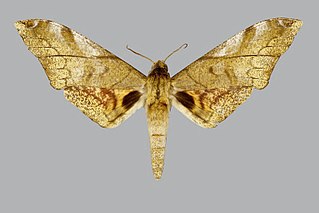
Platysphinx constrigilis is a moth of the family Sphingidae first described by Francis Walker in 1869. It is known from Africa.
Phylloxiphia oweni is a moth of the family Sphingidae. It is found from Sierra Leone east to the Central African Republic and then south to Gabon, the Republic of the Congo and the Democratic Republic of the Congo.

Sphingonaepiopsis malgassica is a moth of the family Sphingidae. It is known from Madagascar.

Temnora burdoni is a moth of the family Sphingidae. It is known from Tanzania.

Temnora elegans is a moth of the family Sphingidae. It is known from western Africa and in savanna from Angola to Zambia, Zimbabwe, Malawi and East Africa.

Temnora trapezoidea is a moth of the family Sphingidae. It is found from Nigeria to Kenya, Tanzania and Zambia.
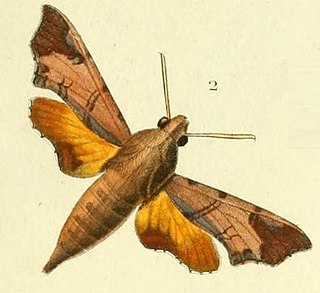
Temnora pseudopylas is a moth of the family Sphingidae. It is very common in eastern and southern Africa, but absent in very dry habitats.

Theretra perkeo is a moth of the family Sphingidae. It is known from the arid areas north of the equatorial forest belt, from Senegal to northern Uganda.
Gnathothlibus australiensis is a moth of the family Sphingidae. It is known from the Northern Territory and Queensland.
Gnathothlibus fijiensis is a moth of the family Sphingidae. It is known from Fiji.

Gnathothlibus brendelli is a moth of the family Sphingidae. It is known from Sulawesi.
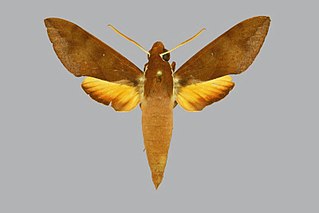
Gnathothlibus dabrera is a moth of the family Sphingidae. It is known from Sulawesi.
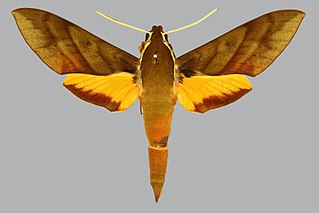
Gnathothlibus saccoi is a moth of the family Sphingidae. It is known from Vanuatu.

Gnathothlibus vanuatuensis is a moth of the family Sphingidae that is endemic to Vanuatu.
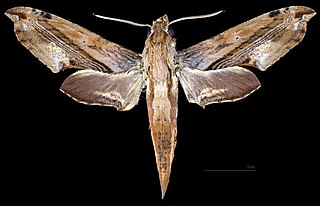
Eupanacra sinuata, the sinuous rippled hawkmoth, is a moth of the family Sphingidae. It is known from Nepal, north-eastern India, south-western China, northern Thailand and Vietnam.

Perigonia thayeri is a moth of the family Sphingidae. It is native to the island of Saint Vincent.

Protambulyx sulphurea is a species of moth of the family Sphingidae.
















